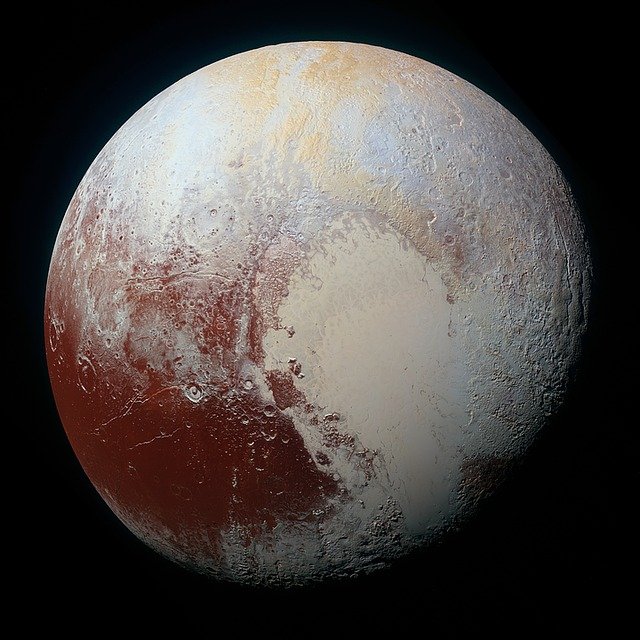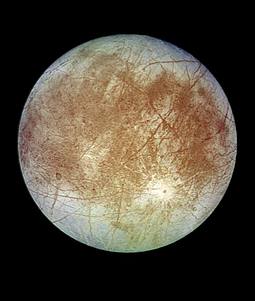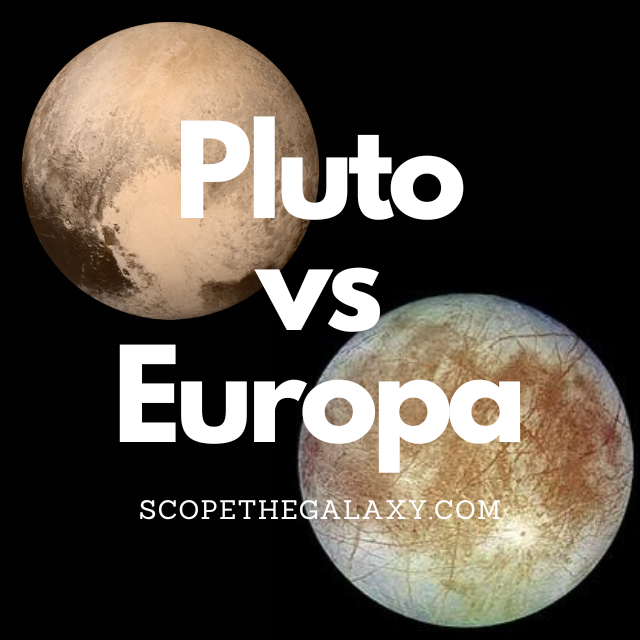*This post may contain affiliate links. This means we may make a commission if you purchase an item using one of our links*
The main differences between Pluto and Europa is that Pluto is a dwarf planet that has 5 other moons orbiting it, is 2,370km in diameter and is the 9th farthest planet from the Sun, where it would take it 247.78 years to orbit the Sun whereas Europa is Jupiter’s 4th biggest moon with a diameter of 3121.6km, has water ice on its surface and a practically non-existent atmosphere.
There are numerous other differences and the odd few similarities between Pluto and Europa so, continue reading for a more detailed look at each celestial body below.
What Is The Planet Pluto?
Table of Contents

In the past Pluto was the 9th farthest official planet in our solar system however, in 2006 after many debates between astronomers, the International Astronomical Union officially downgraded it to a dwarf planet.
The reason for this downgrade at the time was primarily down to Pluto simply being very small when compared to every other planet and even the moons orbiting these planets. Pluto’s dwarf status is debated still to this day but, for now it still remains under this dwarf bracket for a planet
Its diameter for example is only 2,370km, which is a third of Earth’s Moon. With that being said, despite the significant size discrepancy Pluto shows, it still does have more moon like objects orbiting it than Earth and I’m not saying just one more.
In total this terrestrial dwarf planet has 5.
Pluto’s atmosphere consists mostly of molecular nitrogen whilst molecules of methane and carbon monoxide have been observed also. As for its surface, it consist mostly of frozen nitrogen, methane, and carbon monoxide ices.
One of Pluto’s most unique characteristic is that Charon (its largest moon) is tidally locked to it and vice versa, which means that the two essentially orbit each other.
In essence only one side of Charon and one side of Pluto surface will face each other at any given time.
Pluto’s temperature is between -222 to -232 degrees Celsius based on how close it gets to the Sun when orbiting it, whilst its core temperature isn’t anything too special sitting around 500 – 1,000 degrees Celsius.
The main reason it’s as cold as it is and has a relatively cold core in comparison to the other planets would be, which is mostly down to its size. A larger size would mean more mass could be compressed at the center which would produce more heat at the core.
Pluto’s orbit is also different from the other main plants in our solar system, following an elliptical orbital path as opposed to the circular path the others take. As a result of its distance from the Sun, Pluto will complete each one of these elliptical cycles around once every 247.78 years.
Even its rotational cycle is very slow, where one cycle is completed in 157 hours. Another interesting fact is the Pluto’s axial tilt is almost on its side at 57 degrees, similar to Uranus.
What Is The Moon Europa?

Europa is the smallest of the Galilean moons, first discovered on 8th January 1610. The surface of this icy world is frozen, but scientists believe a watery ocean could lie beneath the surface. And in 2012, researchers found a possible water plume in the Southern polar region of Europa.
This research is yet to be confirmed; still, it gives us reasonable grounds to hypothesize that water could exist on this icy moon.
Estimates place Europa at around 4.5 billion years old (the same age as its planet, Jupiter), and its average distance from the Sun is approximately 780 million km.
It has a diameter of 3,121.6km, which makes it larger than Pluto but smaller than the Earth’s moon, and the maximum temperature is a chilly -160 degrees Celsius. In regards to mass, it measures in around 4.8 × 10^22 kg.
Europa takes three-and-a-half days to orbit its planet at an average distance of 670,900km, and it is tidally locked, meaning the same side of the moon always faces Jupiter.
Among the fascinating features of this ice moon is its incredibly reflective nature. The icy crust of this body provides a light reflectivity of 0.64 – the highest of any moon in the solar system.
Data from the Galileo spacecraft suggests that Europa is composed of an iron core, rocky mantle, and silicate rock (a similar composition to Earth).
The moon’s surface is covered in cracks, which many theorize could result from tidal currents beneath the surface. It is this potential of water – and of life – that keeps astronomers so interested in this moon.
Europa might be small, but astronomers estimate it holds two to three times more water than the Earth. In addition, this moon possesses the essential elements for life, such as carbon, oxygen, hydrogen, and nitrogen.
There may be no solar energy on this moon, but hydrothermal vents could provide energy, and tidal heating from Jupiter could provide a heat source and keep the moon stable enough for life to form. In addition, the liquid ocean is well protected from radiation from thick, icy surfaces.
Similarities Between Pluto And Europa
Pluto and Europa do share a few similarities between themselves, which includes the following:
- Both have a hotter central core.
- Both have a rocky, terrestrial surface.
- Both are spherical in shape.
- Neither have rings surrounding them.
- Both are tidally locked to another entity.
- Both have atmospheres that are negligible in comparison to Earth.
- Both orbit their celestial body in an elliptical pattern.
Differences Between Pluto And Europa
In regards to the differences between the two celestial bodies, they would include the below:
- Pluto is the smaller of the two with a diameter 2,370km whereas Europa has a diameter of 3121.6km.
- Pluto has 5 moons whilst Europa has 0.
- Europa has water ice within its surface whilst Pluto’s surface is made mostly of frozen nitrogen, methane, and carbon monoxide ices.
- In regards to density, Pluto’s is 1.88 g/cm³ whilst Europa’s is 3.01 g/cm³.
- Pluto’s temperature is -222 to -232 degrees Celsius whilst Europa’s average temperature is -160 degrees Celsius.
- In regards to mass, Pluto’s mass is 1.309 × 10^22 kg which is far less than Europa’s that is 4.8 × 10^22 kg.
- Europa has an axial tilt of 0.1 degrees whilst Pluto’s axial tilt is 57 degrees.
- A full orbital cycle around the Sun will take Pluto 247.78 years whilst Europa completes an orbit around the Sun in 12 years and around Jupiter in 3.55 days.
- A day on Europa will take 3.5 days to complete whilst a day on Pluto takes 157 hours or 6.54 days.
- Pluto’s gravitational strength is 0.62 m/s² whilst Europa’s gravitational strength is 1.315 m/s².
Summary
Pluto and Europa are very different from one another even if they do share a few similarities in how they orbit their respective entities and how both are tidally locked to another celestial body in their local region.
Other than this, whether it be the fact Pluto is a dwarf planet and Europa a natural satellite, their differences in size, temperature, mass and just in the manner in which they function, Pluto and Europa are easy enough to separate from another.

